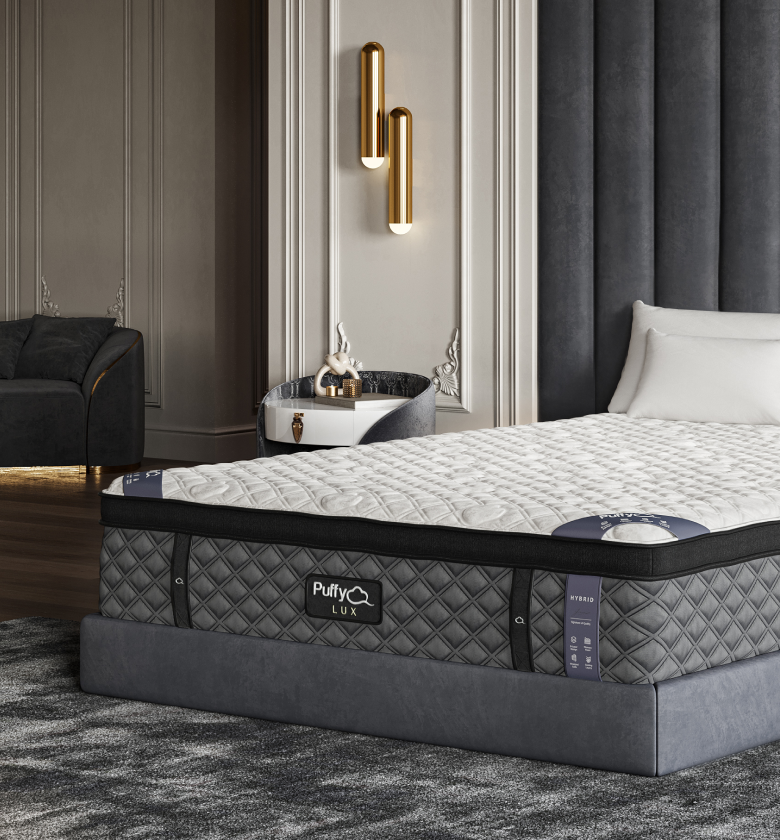Before you dive into the cushioned realm of latex mattresses, pause for a minute. One question you need to consider is: how thick should the mattress be? It's not just about the visible loftiness; it's about durability, comfort, and suitability for different age groups. Let's get into the nitty-gritty of latex mattress thickness.
- How Thick Should a Latex Mattress Be?
- How Thick Should a Latex Mattress Be for a Toddler?
- How Thick Should a Latex Mattress Topper Be?
- The Role of Density in Latex Mattress Thickness
- Thickness vs. Layering: What’s the Catch?
- The Link Between Thickness and Lifespan
- Conclusion: Balancing Thickness for Ultimate Comfort
How Thick Should a Latex Mattress Be?
The standard thickness for latex mattresses ranges between 6 to 12 inches. However, the “ideal thickness” depends on various factors:
- Body Weight: Heavier individuals may require a thicker mattress for optimal support.
- Sleep Position: Side sleepers may benefit from a thicker mattress that offers more cushioning for pressure points.
- Personal Preference: Some people simply prefer the plush feeling of a thicker mattress.
How Thick Should a Latex Mattress Be for a Toddler?
When it comes to toddlers, safety is the number one priority. A mattress that's too thick may pose a risk of falls, while one that's too thin may lack necessary support.
Ideal Thickness for Toddlers:
- 5 to 6 inches is generally considered adequate for toddlers.
- Make sure the mattress has proper edge support to prevent rolling off.
How Thick Should a Latex Mattress Topper Be?
If you're looking to spruce up an existing mattress, a topper can be a great choice. Latex toppers generally range from 1 to 4 inches in thickness.
When to Choose a Thicker Topper:
- Adding Softness: If your existing mattress is too firm, a thicker topper can add plushness.
- Reviving an Old Mattress: A thicker topper can breathe new life into a worn-out mattress.
Check out Puffy mattress reviews from real customers and see how we compare with other brands.
The Role of Density in Latex Mattress Thickness
Density is another factor to consider. A higher-density mattress may not need to be as thick to provide the same level of support and durability.
- Low Density: Below 4.0 lbs/ft³
- Medium Density: 4.0 - 5.9 lbs/ft³
- High Density: Above 6.0 lbs/ft³
Thickness vs. Layering: What’s the Catch?
You might see multi-layered latex mattresses in the market. While they can offer customizable comfort, they may not always be thicker.
- Interchangeable Layers: These mattresses allow you to switch out layers for customized support.
- Zoned Layers: These have different areas of firmness within a single layer.
The Link Between Thickness and Lifespan
Thicker mattresses often have a longer lifespan. This is because the additional material can take longer to break down.
- Durability: Thicker mattresses often last longer.
- Better for Couples: If the mattress needs to support more weight, a thicker option is usually better.
Use our store locator to find the closest furniture or mattress store near you and feel the cloudlike comfort of our Puffy Mattress in person.
Conclusion: Balancing Thickness for Ultimate Comfort
When you're investing in a latex mattress, the thickness isn't just a superficial feature; it’s a pivotal factor affecting everything from comfort to longevity. So, whether it’s for you, a partner, or a toddler, consider the many variables before making a decision. After all, we're talking about the surface you'll spend a third of your life on. It’s crucial to get it right.

- Award-winning comfort.
- Lifetime warranty.
- 101-night sleep trial.
- Free shipping and returns.
- 100% made in USA.












